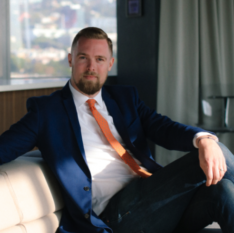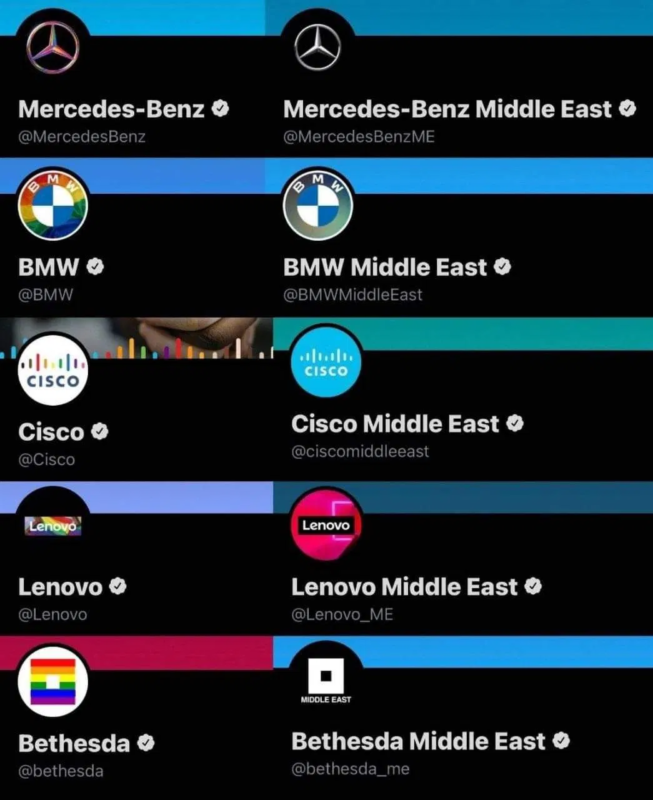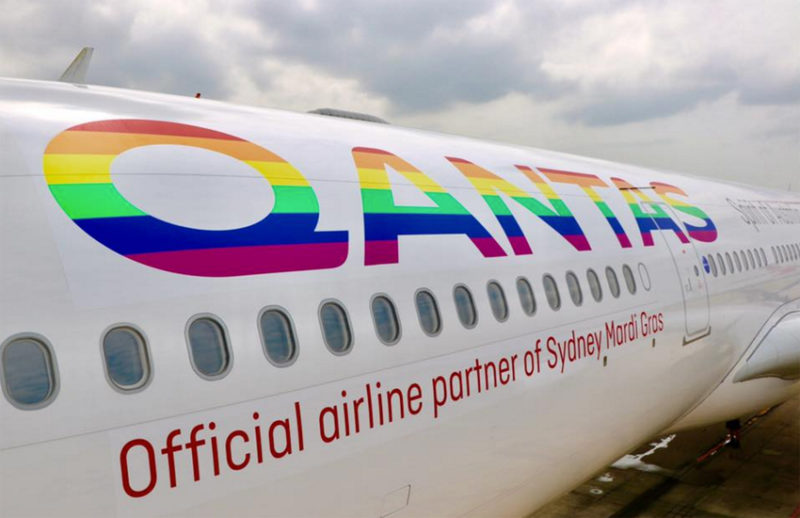Pride Month marketing: How brands are still getting it wrong
“When brands do rainbow washing, which is the idea that we’ll just turn our logo rainbow and we’ll make a $10,000 donation to a queer organisation, it is pandering.”
As Pride Month comes to an end, Mumbrella’s Calum Jaspan looks into how brands have engaged with the LGBTQI+ community, and how some are continuing to miss the mark when it comes to community-based campaigns.
Pride Month has again brought up conversations about the all-too-easy act of corporate logos adopting a rainbow theme in some way. But as it turns out, brands doing this without any substance or alliance to the cause are still numerous. What’s more, with the depth of the LGBTQI+ community, simply slapping a rainbow on a logo or other branding without thought continues to do damage.
In a June episode of the Mumbrellacast, Mumbrella’s Damian Francis interviewed furniture retailer Koala’s chief marketing and technology officer, American-based Peter Sloterdyk, where he spoke about this issue directly.
“I never think it’s more prevalent than during an acknowledgement month, whether that is Pride Month, or Black History Month in the States, when brands do rainbow washing, which is the idea that we’ll just turn our logo rainbow and we’ll make a $10,000 donation to a queer organisation, it is pandering. And there is nothing authentic about it. Because if you don’t support that community the other 11 months of the year, there is nothing genuine about what you are doing in June.

Koala’s Peter Sloterdyk
“There is a mad dash to adhere your brand to a cause, to a belief, to an effort, in one way or another, but if you do not have representation in your company connected to that community or cause, you are going to mess it up. For the companies running a pride campaign right now, was there a queer person involved? If the answer is no, turn it off right now, stop spending money on it immediately and get people involved. Because you don’t have enough representation and you’re not paying attention the other 11 months of the year.”
Simply put, it is wrong to make a thinly veiled effort to cash in on celebrations of diversity such as Pride Month and Mardi Gras, without making material strides towards furthering the cause at the heart of it. And we have seen this done too many times.

Ogilvy’s Richard Brett
In order to find out what brands should be doing to ensure they are making a genuine effort, and not using Pride Month or other events as a transactional exercise, I spoke to CEO, Opr & Ogilvy Health, Richard Brett, and Kate Rourke, head of creative insights Asia Pacific at Getty Images and iStock.
Getty Images, in partnership with GLAAD, a LGBTQI+ media advocacy organisation, has announced its latest initiative and guidance, in a partnership that aims to increase visibility, while also challenging harmful and cliched visual stereotypes facing the LGBTQI+ community.
The new guidance stems from recent research from Getty Images’ 2021 Visual GPS survey, which demonstrates that in Australia, New Zealand and globally, LGBTQI+ visual representation remains low and stereotypical.
The survey’s key findings found that only one-fifth of Australian and New Zealand respondents stated seeing LGBTQI+ people represented regularly or frequently in visuals, and said that when they do, it is often narrow and stereotypical with:
30% of such visuals depict gay men as ‘feminine’
25% of such visuals depict LGBTQI+ people carrying the rainbow flag in some capacity
31% of such visuals depict lesbian women as ‘masculine’
36% of such visuals depict gay men as ‘flamboyant’
While eight in ten Australian and New Zealand consumers say they expect brands to be consistently committed to diversity and inclusion, only four in ten feel accurately represented.
“What we certainly found through our own research, is that consumers in Australia, New Zealand and interestingly, very much in line with what we’re seeing globally, are very accepting of, and want to see many more diverse, inclusive stories, of which the LGBTQ community, are very accepting and want to see. Where the disconnect happens is then trying to get that authenticity, right through businesses and brands,” says Rourke.

Kate Rourke, head of creative insights Asia Pacific, Getty Images and iStock
The aim of the guidebook is not to call out brands, but to direct them towards how they be more representative and genuine in their approach. The research found that brands do want to do it right, but there is a widespread fear in getting it wrong.
“What was really interesting when we partnered with GLAD, and the visibility project through Procter & Gamble, was that genuinely, brands have fear of getting it wrong. So it’s not that they necessarily don’t want to do it, they’re worried about not getting it right and not being authentic in what they’re doing.”
Brett also gave his perspective from an executive level, and on a personal level, as a member of the LGBTQI+ community, on what mistakes are still being made, and why this can be problematic, when real efforts aren’t made.
“In essence, any partnership with LGBTQI+ (and other minority groups), needs to be about doing something helpful or useful to support the community. Many in our community feel that companies and brands just want the association, see Pride or Mardi Gras as a marketing opportunity to raise sales, without actually doing anything meaningful to support the community, challenge a problem or deal with prejudice.
Corporates often lump the whole community as one, but actually it is made of many diverse sub-communities, all with their own battles and challenges, so it is important to really understand the complexity of these groups.”
Rourke continues: “Consumers in Australia and New Zealand want companies and brands to be inclusive with diversity within their own companies and with their employees. Are they celebrating all the different holidays? This isn’t just LGBTQI+ people, this is across all the more underrepresented groups that we have in society.”
If a brand has had the awareness to consider changing its logo, run a Pride campaign or product, then there is no reason for it to not know that LGBTQI+ inclusion still has a way to go in Australia, let alone globally, and therefore it must be supported properly.
Brett says that efforts from brands need to be based on real insight or truth, based on the understanding of complexity, only then can they go on to help challenge or overcome these perceptions or issues.
He also points to several examples where this has been executed correctly.
“Firstly Netflix, who of course, regularly challenge perceptions or stereotypes with their programming. Netflix supported Mardi Gras here in Sydney, investing in a float with the stars of shows that represent the community; those shows regularly challenge the population’s perceptions and stereotypes of us.
“Netflix also has its own Instagram account dedicated to LGBTQI+ content (@Most). Another well regarded example would be Coca-Cola’s ‘This Coke is a Fanta’ campaign which took on this homophobic derogatory slur, raised awareness of it and created what was in essence a cultural shift around that term to become a statement of empowerment and pride.”
As Sloterdyk says, if you aren’t really making a concerted effort to better these issues, then there is nothing authentic about what your brand is doing. Making a donation, while it is something, is leaving the responsibility in the hands of wherever that money is being directed to force change, while giving the illusion that the brand itself is helping. It’s more of a self-gratification exercise.
This year’s Pride Month
This year in Australia, we saw fewer Pride Month campaigns from brands than in other years, and one factor may be because, as Rourke says, many brands are fearful of being called out publicly for insincere efforts to align themselves, when it can be easily found out they are not doing much internally.
This is often the case with international organisations that have presence in markets where progress on social inclusion has not made it very far. At the most basic level, this can be seen through the aforementioned rainbow logo on social channels, as evidenced by the picture below.

Image source: Reddit
The younger generation, more socially aware, digitally active and brought up in the age of social media, are wise to inauthentic brand building exercises.
And then we have areas such as sports, that traditionally lag behind on social progression. Public backlash forced the European footballing body, UEFA, into a U-turn last week after launching an investigation into German captain Manuel Neuer’s decision to wear a pride themed armband. A week later, the European football administrative body were in the headlines for rejecting plans to have the Allianz Stadium in Munich lit in rainbow colours for Germany’s tie against Hungary.
A response to the request read: “UEFA, through its statutes, is a politically and religiously neutral organisation … Given the political context of this specific request—a message aiming at a decision taken by the Hungarian national parliament—UEFA must decline this request.”
Ignoring the precedence given to the renowned social progressive Viktor Orbán, UEFA’s twitter logo remains lit up with rainbow colours, a ‘chef’s kiss’ example of this aforementioned pandering. (As of 01/07 the logo has since been changed back to its previous state).
— UEFA (@UEFA) June 23, 2021
There have been some campaigns this year though: Pinterest’s ‘Show your true colours’ campaign; sports clothing brand Champion launching a new Pride range, as well as announcing a partnership with the Queer Sporting Alliance; Google’s Finding Pride in Asia Pacific campaign; and Laverne Cox starring in SodaStream’s Pride Month campaign, to promote its new ‘Spirit Sparkling Water Maker – Rainbow Story Edition’.
SodaStream stated in the campaign that 10% of this pride-themed product’s price (listed at A$129 on SodaStream’s Australian online store) will go towards ILGA World, a global LGBTQI+ NGO. Yet taking that 10% (A$13) out of the equation, the fact of the matter remains that SodaStream is still using Pride Month as a vehicle to make $116 per unit off a product, that doesn’t necessarily do anything to further equality at a local or global level.
For context, the same unit without the ‘Rainbow Story Colouring Markers’ retails at $109 on the SodaStream online store. So while the money going to ILGA World will make a difference, in terms of the contribution, this isn’t really coming from the brand, but rather a promotion.
When contacted about the difference in product price, and what is contributing to the $20 price point different, SodaStream said:
“SodaStream’s Limited Edition Spirit Rainbow Story Sparkling Water Maker and its accessories were developed as a special limited edition for Pride. This sparkling water maker has a new smooth, matte front panel (unlike the Original Spirit) to allow the perfect surface for painting grip and self-expression.
This is not a one-off partnership, for the third year in a row SodaStream has partnered with ILGA World, a global LGBTQI+ NGO and donated 10% of proceeds from the ‘Rainbow Story’ products to the organisation. This includes SodaStream Australia who will be honouring 10% of the original RRP ($129) of its Limited Edition Rainbow Story Sparkling Water Maker and accessories.”
If the first thought in carrying out a Pride Month campaign comes back to a product, or some sort of gain for that brand without contributing positively and genuinely to the cause, industry experts like Brett and Sloterdyk would suggest the aims behind it are probably wrong.
Visual representation
Getty Images’ survey also found that when it comes to brand messaging and storytelling, members of the LGBTQI+ community are very rarely shown outside the context of exactly that, being members of the LGBTQI+ community.
“We don’t tend to see just everyday moments of cooking, cleaning, going to school, hanging out with friends, all of those everyday things that we all do, we don’t tend to see it for the LGBTQI+ community. We very seldomly see the LGBTQI+ community at work with colleagues or leading a meeting,” says Rourke.
Rourke adds that brands need to ensure they are following through internally on commitments to diversity and inclusion. Because if they aren’t, theywill be found out, and it is easy to do so. “And if you are, then it is much easier to be genuine in your messaging externally.”
“Consumers are wanting to find out about brands, their values, what they stand for,” she explains. “With lots coming out with missions and mission statements and messaging that they want to do, it’s going to get found out. So it’s really making sure it’s going right through from internally to then coming out externally. So it’s following that whole journey through I would say.”
Going back to where we started, Sloterdyk says brands need to be active 12 months of the year, not just when Pride Month rolls around. Pride Month is when the true connections are celebrated, the efforts towards the cause are seen as genuine, not pandering, and not a brand building exercise.

Brett finishes with some sage advice for brands: “Don’t be transactional – connect with the community, understand their challenges, and do something to support the community. This is about doing something, and not showing or telling; I would even argue that corporations and brands should take on a problem, make an action around it and support the community long before they then talk about it. Once they are seen as long-term supporters and advocates, such as Absolut, Netflix or Qantas, then they have the community’s support.”

